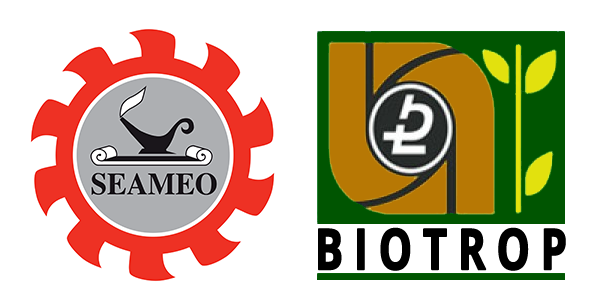
SEAMEO (Southeast Asian Ministers of Education Organization) was established in 1965 through the SEAMEO Charter signed by seven (7) South East Asia countries. The signing of the charter marked the establishment of the centres. At present, there are 26 specialist institutions that undertake training and research programs in various fields of education, science, and culture. SEAMEO BIOTROP, the Southeast Asian Regional Centre for Tropical Biology is one of the centres.
SEAMEO BIOTROP, the Southeast Asian Regional Centre for Tropical Biology, was established on 6 February 1968. In carrying out the mandate of Governing Board, SEAMEO BIOTROP conducted its activities emphasizing on the empowerment of human resource in Southeast Asia. The activities cover research, training, networking, and personnel exchange and information dissemination in tropical biology.
Vision:
To become a reputable center for sustainable biodiversity management in Southeast Asia
The meaning of reputable center refers to SEAMEO BIOTROP's mandate, namely;
- SEAMEO BIOTROP is leading in science-education of Biodiversity, Biotechnology, and Bioproducts (science-education).
- SEAMEO BIOTROP manages the innovation and creative capacity buildings based on customer/market needs (capacity building).
- SEAMEO BIOTROP is a science connectivity and learning system based on Applied Digital Science Technology (information dissemination).
Mission:
- To deliver innovative products and technologies in science-education for saving biodiversity in transforming best practices for the betterment of Southeast Asia societies.
- To promote applied science education on sustainable use of biodiversity for the well-being of society in Southeast Asia.
- To build highly competent human resources for managing sustainable biodiversity in Southeast Asia.
The adaptation of SEAMEO BIOTROP's missions also refers to SEAMEO Strategic Themes and the expected impacts of SEAMEO BIOTROP. These missions are expected to elevate SEAMEO BIOTROP Recognition, SEAMEO BIOTROP Acknowledgement, SEAMEO BIOTROP Human Resources Mobilization and SEAMEO BIOTROP Standardization and References.
- SEAMEO BIOTROP Recognition indicators are: 12,000 herbarium specimens in the BIOT collection, SCOPUS and SINTA indexed BIOTROPIA international scientific Journal reaches the Q2 SJR status; Biodivers popular scientific magazine, Sinta or Scopus indexing;
- SEAMEO BIOTROP Acknowledgement indicators are: seaweed tissue culture, lobster apartment, expert system, SMARTS-BE program;
- SEAMEO BIOTROP Human Resources Mobilization indicators are: BioCourier, in-country training course, regional and international training courses;
- SEAMEO BIOTROP standardization and references indicators are: Biodiversity ranking system (Pollution and Contamination, IAS (Invasive Alien Species), weed risk assessment); flora and fauna tracking and distribution;
- SEAMEO BIOTROP Management System indicators are: ISO 17025 Accreditation (Laboratory Quality Management System), ISO 9001 Certification (Quality Management System).
Goals
SEAMEO BIOTROP has five strategic goals to carry out its missions, namely:
- Provide science-based information to enable communities and institutions to address critical biological problems and benefit from real values and sustainable use of the region’s tropical biological resources;
- Strengthen individual and institutional capacities on current knowledge and good practices in tropical biology;
- Synthesize, translate, and provide equal access to information in tropical biology to enhance knowledge, practices and policy;
- Facilitate effective development interventions and partnerships for sustainable and equitable sharing of benefits of the region’s tropical biological resources; and
- Enhance organizational management and efficiency toward maximized use of resources and effective service delivery to clients and partners.